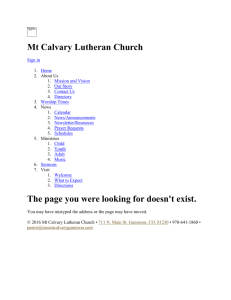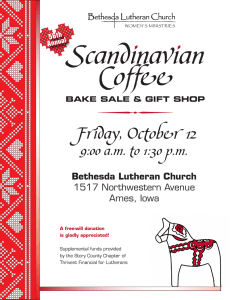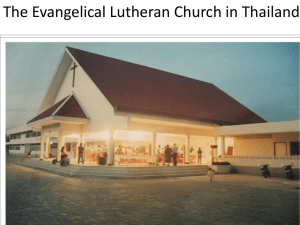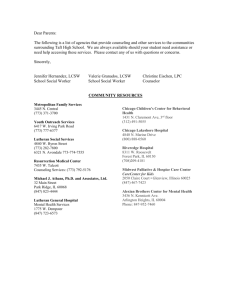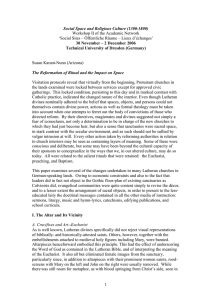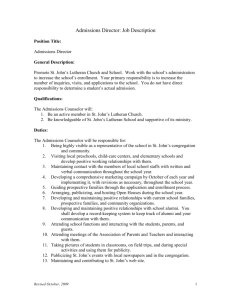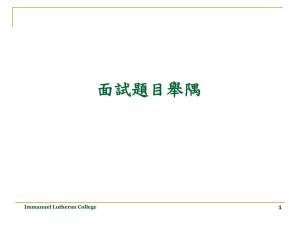Workshop II of the Academic Network Vera Isaiasz (Berlin)
advertisement
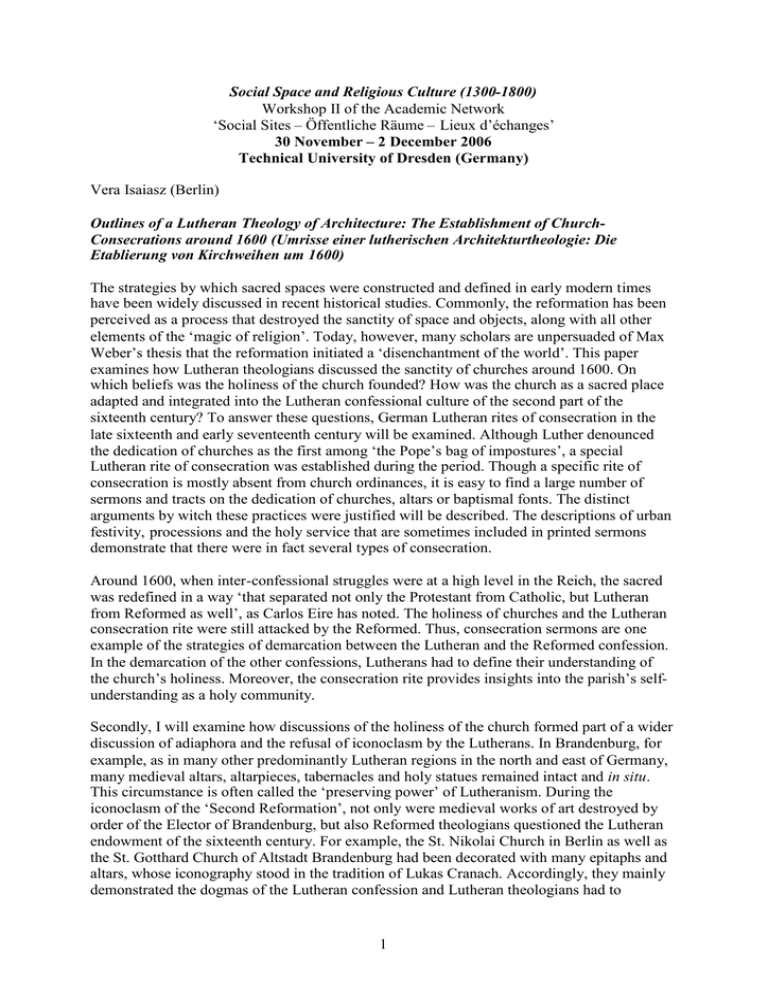
Social Space and Religious Culture (1300-1800) Workshop II of the Academic Network ‘Social Sites – Öffentliche Räume – Lieux d’échanges’ 30 November – 2 December 2006 Technical University of Dresden (Germany) Vera Isaiasz (Berlin) Outlines of a Lutheran Theology of Architecture: The Establishment of ChurchConsecrations around 1600 (Umrisse einer lutherischen Architekturtheologie: Die Etablierung von Kirchweihen um 1600) The strategies by which sacred spaces were constructed and defined in early modern times have been widely discussed in recent historical studies. Commonly, the reformation has been perceived as a process that destroyed the sanctity of space and objects, along with all other elements of the ‘magic of religion’. Today, however, many scholars are unpersuaded of Max Weber’s thesis that the reformation initiated a ‘disenchantment of the world’. This paper examines how Lutheran theologians discussed the sanctity of churches around 1600. On which beliefs was the holiness of the church founded? How was the church as a sacred place adapted and integrated into the Lutheran confessional culture of the second part of the sixteenth century? To answer these questions, German Lutheran rites of consecration in the late sixteenth and early seventeenth century will be examined. Although Luther denounced the dedication of churches as the first among ‘the Pope’s bag of impostures’, a special Lutheran rite of consecration was established during the period. Though a specific rite of consecration is mostly absent from church ordinances, it is easy to find a large number of sermons and tracts on the dedication of churches, altars or baptismal fonts. The distinct arguments by witch these practices were justified will be described. The descriptions of urban festivity, processions and the holy service that are sometimes included in printed sermons demonstrate that there were in fact several types of consecration. Around 1600, when inter-confessional struggles were at a high level in the Reich, the sacred was redefined in a way ‘that separated not only the Protestant from Catholic, but Lutheran from Reformed as well’, as Carlos Eire has noted. The holiness of churches and the Lutheran consecration rite were still attacked by the Reformed. Thus, consecration sermons are one example of the strategies of demarcation between the Lutheran and the Reformed confession. In the demarcation of the other confessions, Lutherans had to define their understanding of the church’s holiness. Moreover, the consecration rite provides insights into the parish’s selfunderstanding as a holy community. Secondly, I will examine how discussions of the holiness of the church formed part of a wider discussion of adiaphora and the refusal of iconoclasm by the Lutherans. In Brandenburg, for example, as in many other predominantly Lutheran regions in the north and east of Germany, many medieval altars, altarpieces, tabernacles and holy statues remained intact and in situ. This circumstance is often called the ‘preserving power’ of Lutheranism. During the iconoclasm of the ‘Second Reformation’, not only were medieval works of art destroyed by order of the Elector of Brandenburg, but also Reformed theologians questioned the Lutheran endowment of the sixteenth century. For example, the St. Nikolai Church in Berlin as well as the St. Gotthard Church of Altstadt Brandenburg had been decorated with many epitaphs and altars, whose iconography stood in the tradition of Lukas Cranach. Accordingly, they mainly demonstrated the dogmas of the Lutheran confession and Lutheran theologians had to 1 fundamentally defend their attitudes towards sacred space and church art facing the challenge of the Reformed iconoclasm. In consequence, they developed a specific Lutheran understanding that promoted claims of Lutheranism’s ‘preserving power’ (“bewahrende Kraft des Luthertums”). This, however, meant not merely conservation but also reasonable adjustment. Later on, during the second part of the seventeenth and throughout the eighteenth century, medieval art and the art of the sixteenth century was considered obsolete and unsuitable and was sometimes removed. Medieval churches with their gothic floor plan had also become more and more uncomfortable. During a campaign of de-profanation or re-sacralisation of religious buildings a certain theology of architecture was established around 1600. As churches were called “Haus des Herren” they were set apart from the profane world. This made it possible to preserve them as the foremost public places for the exercise of religion and established them as a substantial element of the ‘conservative’ Lutheran confessional culture of the period. 2
